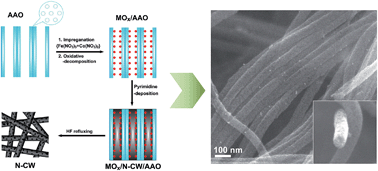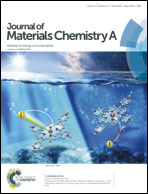Space-confinement-induced synthesis of hierarchically nanoporous carbon nanowires for the enhanced electrochemical reduction of oxygen†
Abstract
Hierarchically nanoporous N-doped carbon nanowires (N-CWs) were prepared by a novel space-confinement-induced assembly strategy, for which nitrogen-enriched pyrimidine and anodic aluminium oxide (AAO) template bearing metal oxides are employed as precursor and nanoscale channels, respectively, and the Fe/Co metal oxide not only blocks the AAO surface from the original surface-templating carbonization, but also introduces nanoporosity with acid etching. Thus-obtained carbon nanowires composed of N-doped graphene-like carbon nanosheets not only contain a high N content (up to ∼12%), but also possess a hierarchically meso/microporous structure (∼1.3 cm3 g−1) with high specific surface area (∼455 m2 g−1). This protocol allows for the simultaneous optimization of graphitization, porous structure and surface functionalization. As a result, the prepared N-CWs demonstrate an attractive electrocatalytic capability towards oxygen reduction reaction (ORR). Specifically, in addition to the improved kinetic current density and overpotential, the N-CWs prepared at 700 °C show the optimized ORR performance with an electron-transfer number of ∼4.0, which very close to that of a commercial Pt/C catalyst.


 Please wait while we load your content...
Please wait while we load your content...